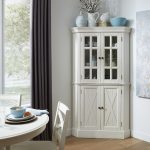The Importance in Home Design
When planning a kitchen, a pantry cabinet is vital. It offers extra storage and helps keep the area neat. Kitchen pantry cabinets allow for better organization of food items and appliances, thus clearing clutter from other kitchen areas. This added functionality can increase the kitchen’s overall efficiency and ease of use.
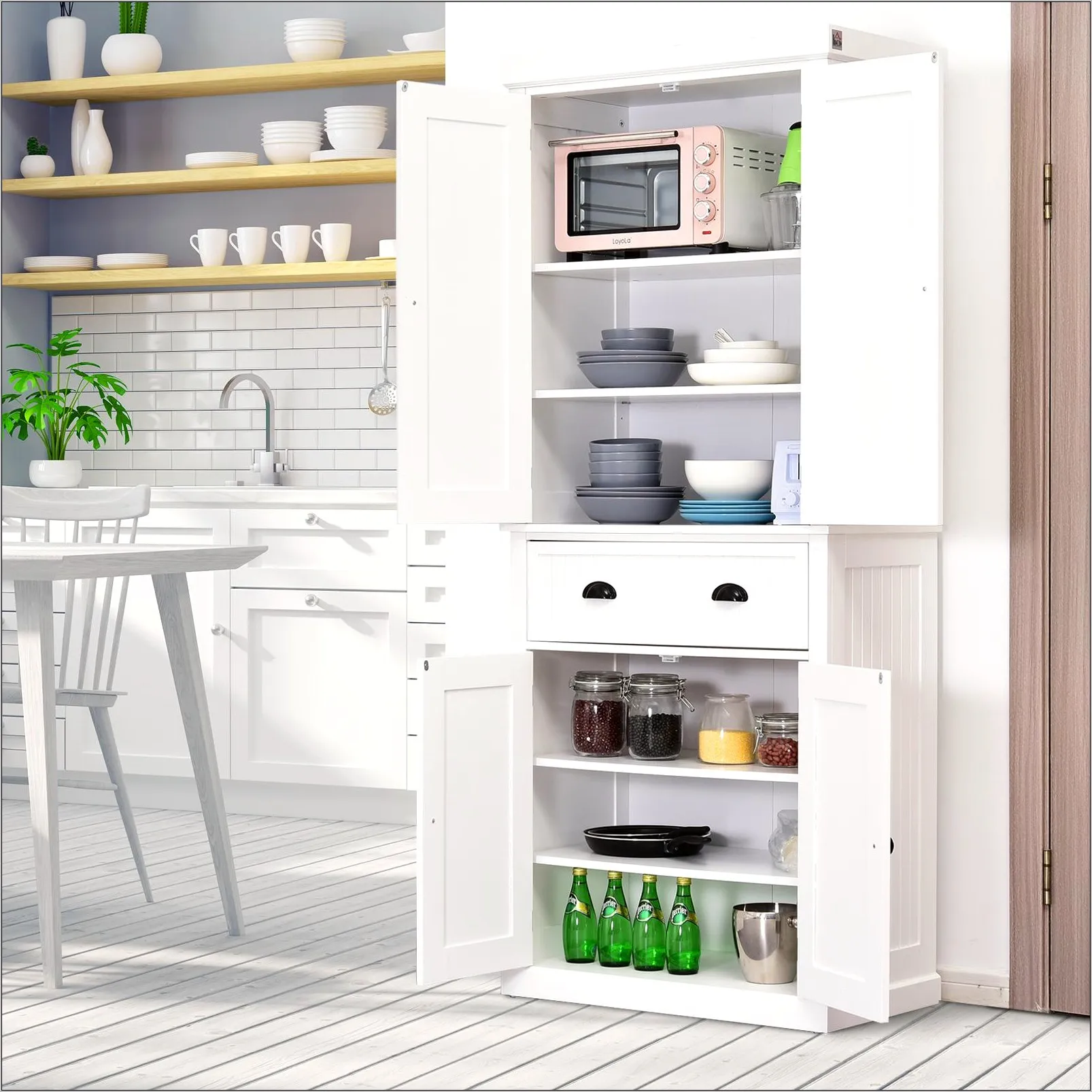
A well-designed kitchen pantry cabinet not only provides storage solutions but also contributes to the kitchen’s aesthetic appeal. It can serve as a focal point, with its style and finish complementing the rest of the kitchen’s design. Moreover, pantry cabinets can add to a home’s resale value. Buyers often look for ample storage space, which a pantry can supply.
In sum, kitchen pantry cabinets are essential for a functional and attractive kitchen. They help manage space, enhance design, and boost home value. When selecting a pantry, consider these benefits to make your kitchen work best for you.
Key Features to Look for in a Pantry Cabinet
When in the market for a kitchen pantry cabinet, certain features can add to its functionality and durability. Here are some essential aspects to consider:
- Space Utilization: A good pantry maximizes storage while taking up minimal space. Look for designs that offer deep shelves, pull-out drawers, or adjustable features that can accommodate various item sizes.
- Quality of Construction: Durable materials and solid construction ensure your pantry will withstand the test of time. Opt for cabinets with sturdy hinges and drawer slides that can handle daily use without issue.
- Accessibility: Pantries should be easy to use. Consider cabinets with clear glass doors or open shelving that allows quick identification and access to items.
- Lighting: Built-in lighting can greatly enhance visibility, making it easier to find what you’re looking for. This can be especially helpful in deeper cabinets.
- Customization Options: Cabinets that offer customizable dividers, racks, or hooks offer flexibility to change the storage setup as your needs evolve.
- Ergonomic Design: The height and reach of shelves should be comfortable to access for all users. Avoid overly tall units that require a step ladder for upper shelves.
Each of these features contributes to the practicality and enjoyment of your kitchen. A well-chosen pantry cabinet not only serves as an efficient storage solution but also complements the kitchen’s overall design and workflow.
Space-Saving Solutions for Small Kitchens
Small kitchens require smart storage to stay clutter-free. A kitchen pantry cabinet is an ideal solution. Here are some space-saving tips for your kitchen pantry cabinet:
- Vertical Storage: Opt for tall pantry cabinets that extend to the ceiling. This makes use of vertical space without expanding the kitchen’s footprint.
- Sliding Drawers: Choose pantry cabinets with sliding drawers. These allow easy access to items at the back without wasting space.
- Custom Shelving: Adjustable shelves help customize space for different sized items, from cereal boxes to spice jars.
- Door Racks: Install racks on the inside of pantry doors. This is an excellent space to store smaller items like cans and condiments.
- Corner Units: Don’t ignore corners. Corner pantry cabinets turn otherwise wasted space into useful storage.
- Pull-out Pantries: A slim, pull-out pantry cabinet can fit in gaps between appliances. It offers storage in areas you might not have considered.
These ideas will help you maximize every inch of your small kitchen. They will ensure your kitchen pantry cabinet is both functional and space-efficient.
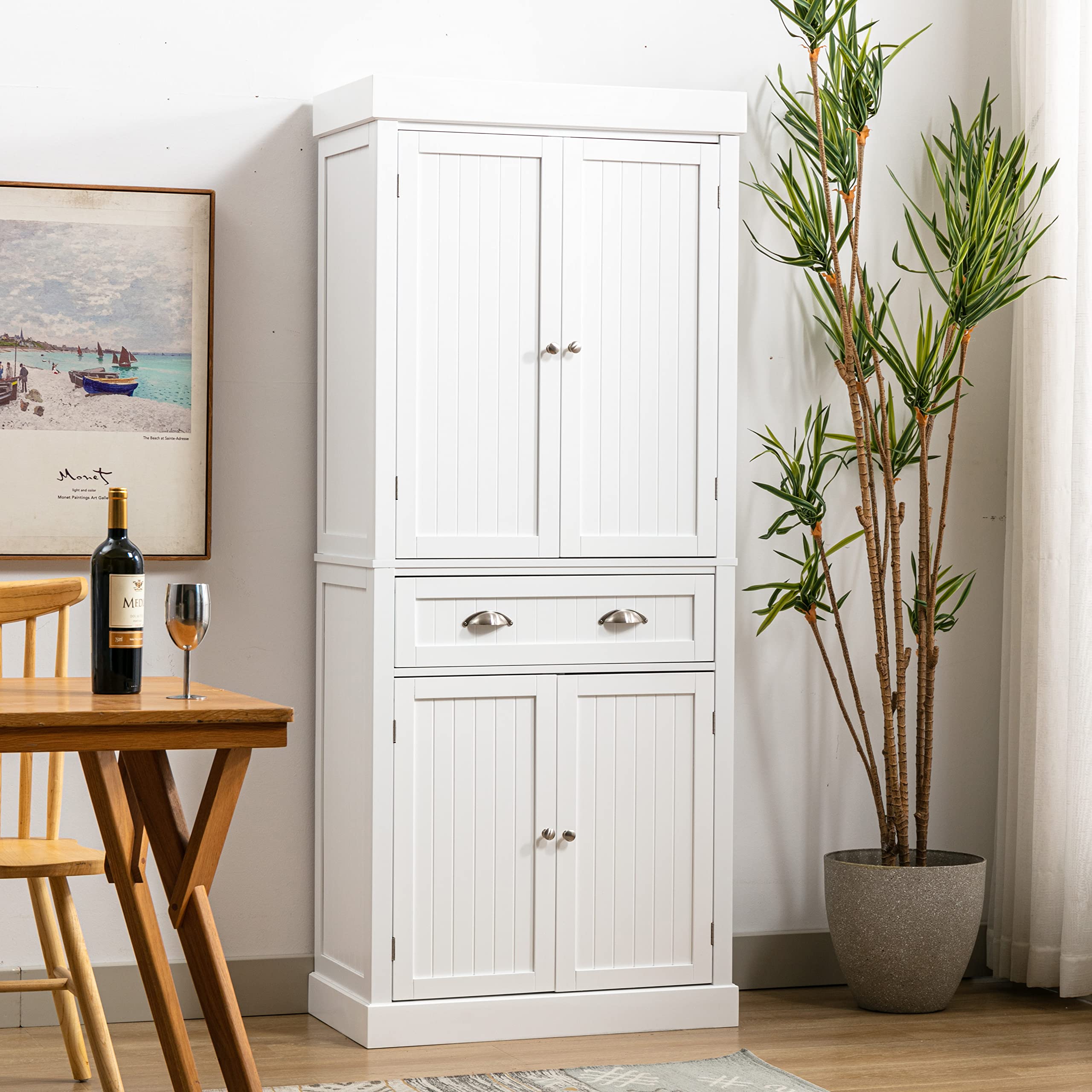 Customizing Your Kitchen Pantry for Maximum Efficiency
Customizing Your Kitchen Pantry for Maximum Efficiency
Customizing your kitchen pantry cabinet can significantly enhance your kitchen’s functionality. Here’s how you can tailor your pantry for top efficiency:
- Assess Your Needs: Start by evaluating what items you use most. Arrange these items for easy access.
- Use Adjustable Shelves: With adjustable shelving, you adapt your space as your storage needs change.
- Incorporate Drawer Dividers: Drawer dividers allow you to designate spaces for specific items, avoiding a jumbled mess.
- Add Lazy Susans: For corners and hard-to-reach areas, a lazy Susan keeps items within reach.
- Install Pull-out Baskets: These baskets make it simple to grab frequently used items.
Every kitchen has its unique demands. By customizing your pantry, you can create an efficient, personalized storage system. Keep the user experience in mind. Ensure access is simple, visibility is clear, and your space fully meets your kitchen needs.
Integrating Pantry Cabinets with Kitchen Aesthetics
Integrating a kitchen pantry cabinet with your kitchen’s look is key for a seamless design. A pantry that matches your kitchen’s style can create a harmonious space. Here are some ways to ensure your pantry compliments your kitchen’s aesthetics:
- Matching Style and Finishes: Choose a pantry with a style and finish that aligns with your kitchen cabinets. This creates a consistent feel.
- Coordinating Color Schemes: Select a pantry in hues that match or complement your kitchen’s color palette. This helps the pantry blend in.
- Harmonious Design Elements: Look for pantry details that echo design elements in the kitchen, like handle shapes or decorative molding.
- Consistent Material Use: If your kitchen features wood, stainless steel, or a specific countertop material, aim to use the same in your pantry for cohesiveness.
- Strategic Placement: Position your pantry so it enhances the kitchen’s layout. It should add to the flow, not disrupt it.
- Artistic Touches: Consider adding a touch of art to your pantry doors with paint or glasswork that reflects your kitchen’s theme.
By paying attention to these details, you integrate your kitchen pantry cabinet without compromising on style. Your pantry becomes a natural extension of your kitchen’s design, enhancing the space’s overall look and feel. Keep these tips in mind and your pantry will not only be functional but also a stylish addition to your kitchen.
The Best Materials for Durable and Attractive Pantry Cabinets
When choosing your kitchen pantry cabinet, the material is key for durability and appeal. Here’s what to consider for the best results:
- Hardwood: Hardwood is a top choice for its strength and classic look. Oak, maple, and cherry are popular options.
- Plywood: For sturdy construction, plywood offers a reliable option. It withstands heavy use and is less likely to warp.
- Medium Density Fiberboard (MDF): MDF provides a smooth finish perfect for paint. It’s also more affordable than solid wood.
- Particleboard: If you’re budget-conscious, particleboard is cost-effective. It may not have the same strength but can still look good with a proper finish.
- Metal: Metal pantry cabinets are a modern choice. They’re easy to clean and bring an industrial edge to your kitchen.
- Glass: Incorporating glass doors can showcase your items and make the space feel larger.
- Laminates: Laminates are versatile and come in various designs. They’re low maintenance and resist scratches.
Selecting the right material will ensure your kitchen pantry cabinet stands the test of time while complementing your kitchen’s style. Consider these options to find the perfect fit for your home.
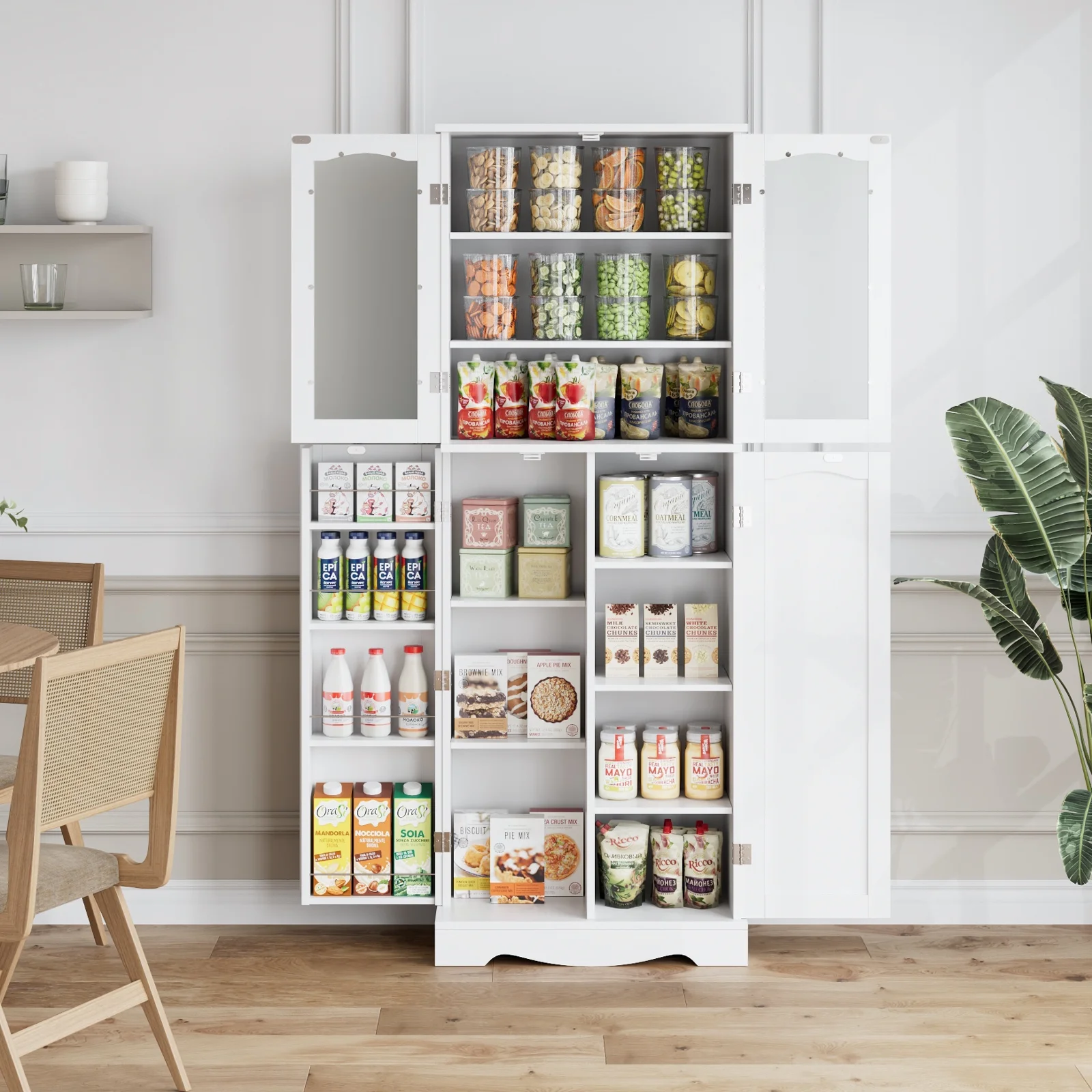 Innovative Pantry Cabinet Accessories and Organizers
Innovative Pantry Cabinet Accessories and Organizers
Innovative accessories and organizers can transform your kitchen pantry cabinet into an organizational powerhouse. Consider integrating these modern solutions to bring order and convenience to your pantry storage:
- Swivel Storage Bins: Revolving bins make it easy to reach everything, even at the back.
- Stackable Baskets: These help utilize vertical space and keep items sorted by type or usage.
- Magnetic Spice Racks: Attach these to the inside of your pantry door to save shelf space.
- Door-Mounted Racks: They offer additional shelving for small items and are easy to install.
- Pull-Out Shelf Units: Sliding shelves provide hassle-free access to all your pantry items.
- Wine Bottle Holders: Crafted holders keep your bottles secure and at the right angle.
- Under-Shelf Baskets: These slide onto existing shelves, adding an extra layer of storage.
When selecting pantry organizers, consider their build quality and ease of use. Choose accessories that fit well with the existing kitchen pantry cabinet features for a cohesive look and function. These organizers can be powerful tools in maintaining order and maximizing every inch of your available space. Using organizers will help you avoid clutter and keep your pantry items within easy reach, making your kitchen operation smooth and efficient.
Maintaining and Organizing Your Kitchen Pantry Cabinet
Maintaining and organizing your kitchen pantry cabinet are key to keeping your kitchen orderly and functional. Here are some essential tips to help you achieve this:
- Regular Cleaning: Schedule time to clean your pantry regularly. Wipe down shelves and sort through items to keep your space tidy.
- Decluttering: Remove items you no longer use or need. This step frees up space and makes it easier to find what you’re looking for.
- Labeling: Use labels to mark shelves and containers. This makes it easy to find and put away items.
- Consistent Review: Periodically check expiration dates and restock as needed. This practice avoids waste and helps with meal planning.
- Inventory Management: Keep an inventory of what you have. This way, you avoid buying duplicates and can keep track of when to use items.
- Storage Solutions: Invest in storage aids like bins and baskets. They can help group similar items together and use space wisely.
- Efficient Arrangement: Place frequently used items at eye level. Store lesser-used items higher up or towards the back.
- Adaptability: Be willing to change your organization system. What works now may need adjustment as your needs change.
By maintaining and organizing your kitchen pantry cabinet effectively, you ensure your kitchen remains a pleasant and efficient space to work in. Keep these practices in mind, and you will find your kitchen easier to manage and more enjoyable to use.
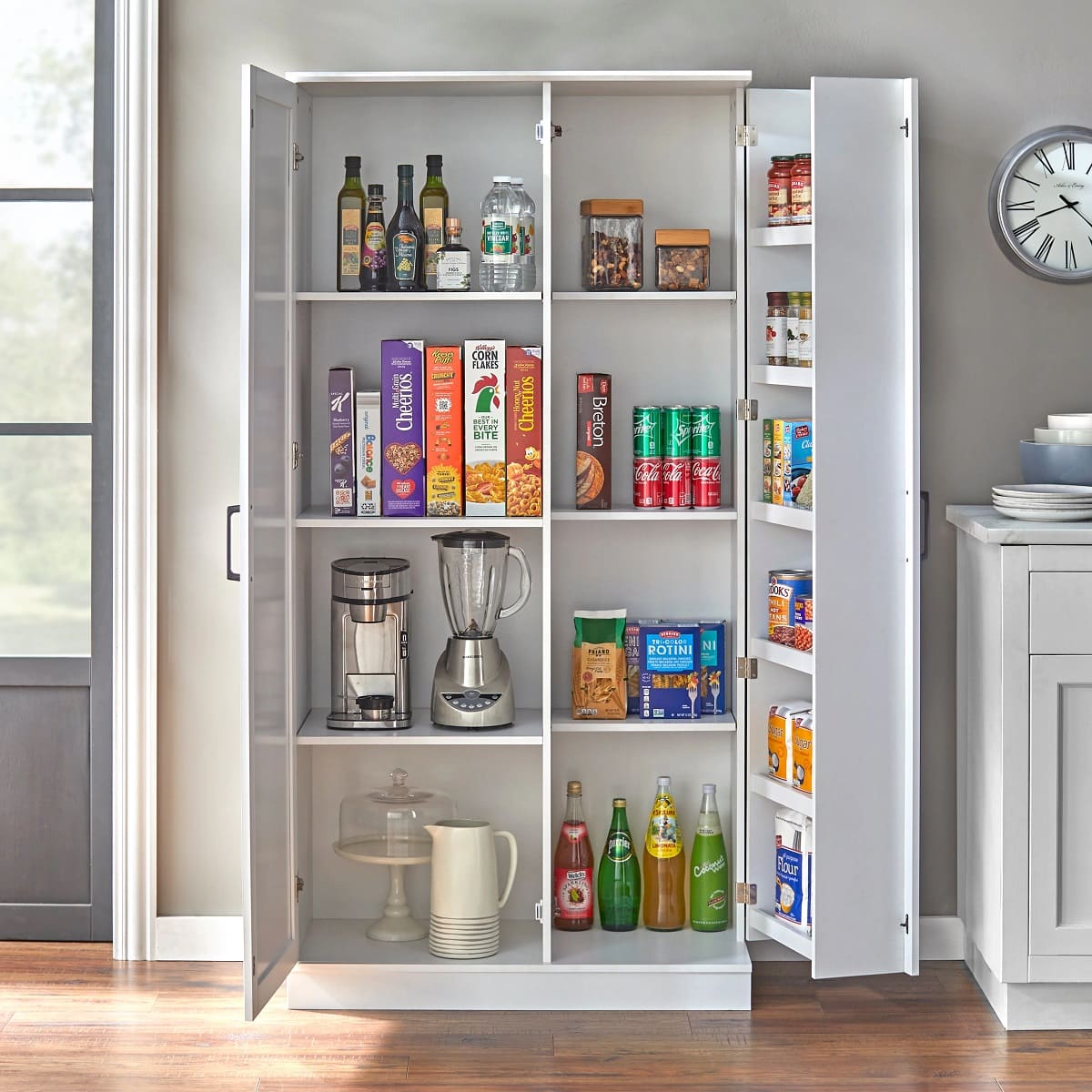 Cost Considerations
Cost Considerations
When planning to invest in a kitchen pantry cabinet, understanding the cost factors involved is crucial to making an informed decision. Here are the primary cost considerations:
Material Costs
The choice of material significantly influences the overall cost of your kitchen pantry cabinet. Solid wood cabinets tend to be more expensive due to the quality and durability they offer, while MDF and laminate options are generally more budget-friendly. Stainless steel cabinets, although higher in price, provide a long-lasting and modern aesthetic.
Size and Customization
The size of the pantry cabinet and the level of customization required can affect the cost. Larger cabinets and those with custom features, such as unique storage solutions or intricate designs, typically incur higher prices. Prefabricated pantry cabinets are often more affordable, but custom-built options allow for a perfect fit and tailored functionality.
Installation Costs
Installation fees vary based on the complexity of the installation and the rates of local contractors. Simple pantry cabinets may require minimal installation, whereas custom or built-in cabinets could necessitate professional installation services. Including installation costs in your budget ensures that you have a clear understanding of the total investment required.
Quality and Warranty
Higher-quality pantry cabinets generally come with a higher price tag but offer superior durability and longevity. Investing in quality materials and construction can save you money in the long run by reducing the need for frequent repairs or replacements. Additionally, consider cabinets that come with warranties, providing peace of mind and protection against defects.
Additional Features
Incorporating additional features, such as pull-out drawers, built-in lighting, or smart technology, can increase the overall cost of your kitchen pantry cabinet. Carefully evaluate which features are essential for your needs and prioritize those that will add the most value and functionality to your kitchen.
DIY vs. Professional Installation
Deciding whether to undertake a kitchen pantry cabinet project yourself or hire a professional can impact both the cost and outcome of the installation. Here are the pros and cons of each approach:
DIY Installation
Pros:
- Cost Savings: DIY installation can save money on labor costs, making it a more budget-friendly option.
- Customization: Undertaking the project yourself allows for complete control over the design and customization of the pantry cabinet.
- Personal Satisfaction: Completing a DIY project can provide a sense of accomplishment and personal satisfaction.
Cons:
- Time-Consuming: DIY installations can be time-consuming, especially for those with limited experience or complex designs.
- Skill Requirements: Proper installation may require specific skills and tools, and mistakes can lead to costly repairs or an unstable cabinet.
- Limited Warranty: DIY projects may void manufacturer warranties, reducing protection against defects or issues.
Professional Installation
Pros:
- Expertise: Professional installers have the experience and skills to ensure a flawless and secure installation.
- Efficiency: Professionals can complete the installation more quickly and efficiently than most DIY enthusiasts.
- Warranty and Support: Hiring a professional often includes warranties and support, providing peace of mind and protection against potential issues.
Cons:
- Higher Costs: Professional installation typically incurs higher upfront costs due to labor fees.
- Less Control: While professionals can accommodate customization, there may be limitations based on their working methods and the manufacturer’s guidelines.
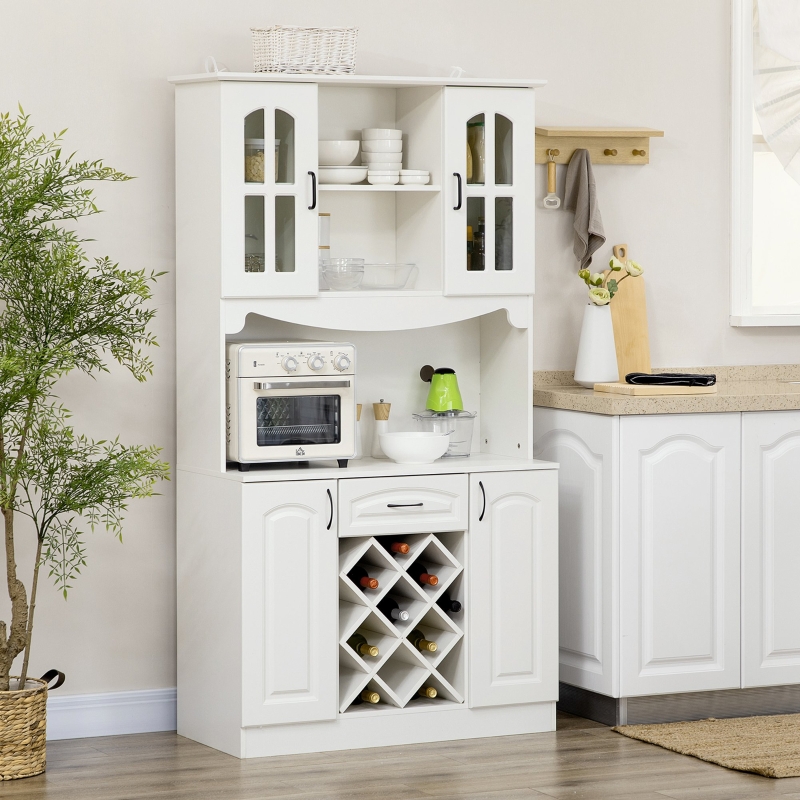 Final Thoughts
Final Thoughts
Selecting the perfect kitchen pantry cabinet is a pivotal step in creating a kitchen that is both functional and beautiful. By carefully considering factors such as design, material, storage features, and sustainability, you can make an informed decision that aligns with your personal preferences and lifestyle. Whether you opt for a traditional wooden cabinet, a modern stainless steel design, or an eco-friendly bamboo option, the right kitchen pantry cabinet will enhance your cooking experience, improve organization, and elevate the overall aesthetic of your kitchen.
Investing in a quality kitchen pantry cabinet is not just about adding storage; it’s about transforming your kitchen into a space that embodies efficiency, style, and comfort. With thoughtful planning and attention to detail, your kitchen pantry cabinet can become an integral part of your home, providing lasting value and satisfaction for years to come.
In conclusion, the kitchen pantry cabinet is an essential element that plays a significant role in the functionality and beauty of your kitchen. By understanding its importance, exploring various design and material options, maximizing storage efficiency, and maintaining the cabinet properly, you can create a kitchen environment that is both practical and visually appealing. Whether you’re renovating your kitchen or simply looking to upgrade your storage solutions, choosing the right kitchen pantry cabinet is a decision that will positively impact your daily life and the overall harmony of your home.
